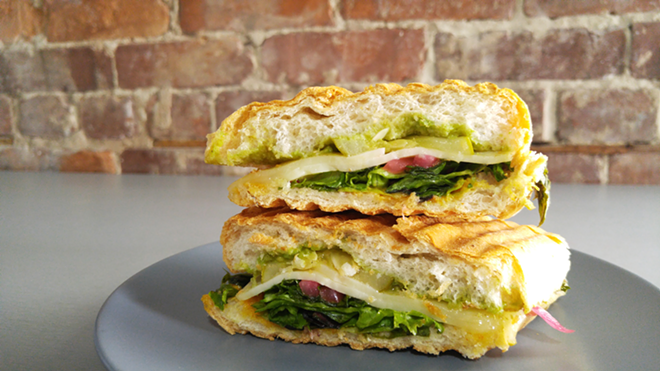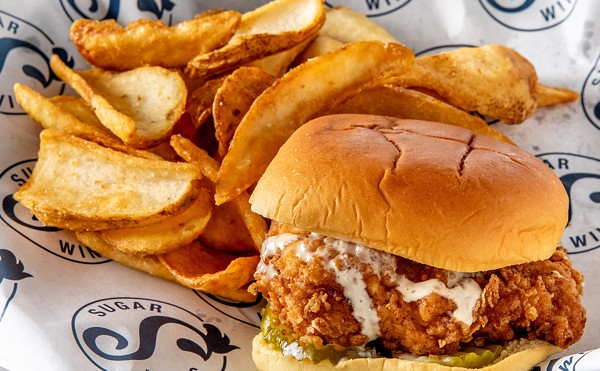It’s hard not to love sandwiches. They’re universal menu items (meals, really) that can be enjoyed any hour of the day — breakfast, lunch or dinner — and when assembled with a little finesse and creativity, their dressings and bread perfectly in sync, whether they’re a one-hander or a two-hander, a special kind of moan-worthy nirvana is achieved.
You know what I’m talking about.
But there are several factors to consider when strategically constructing the sandwich of your dreams. I’m reminded of what City’s Bistro co-owner Steve Johnston, who fashions everything from soups to pasta salad in-house at his young sandwich-driven eatery’s downtown St. Pete headquarters, told me earlier this year.
“We can spend all day long roasting meats and making everything,” Johnston said, “but I have the philosophy that if we put it on crappy bread, then that kind of ruins the whole deal.”
And he’s right. Bread can make or break a sando before that first bite, which is why choosing the right bread for the right sandwich is key. While the decision to go baguette, challah or sourdough seems largely based on personal preference, quality bread is an ingredient the local sandwich sages I interviewed agreed upon. If you need a little bread guidance, however, using contrast and texture to create the sandwich you seek is probably a safe bet. You know, wet ingredients with stiffer, toasted loaves, or drier, crunchy ingredients with soft breads.
Don’t forget about balance, though. This, along with contrast, comes into play when choosing your fillings. Love Food Central’s Valerie Mantzoros, who owns the vegan, gluten-free St. Pete café with her girlfriend and business partner Cindy Toda, says pairing an acidic flavor with something creamy, which they do when building the popular pulled barbecue jackfruit on sourdough, is a win-win.
“We have a barbecue sauce, which has a little bit of that acid flavor, but then we put avocado on it so it kinda balances out that flavor a little bit,” Mantzoros said.
She’s a big fan of the glorious sandwich condiment that is sauce as well. So much so that the pulled jackfruit has two — the aforementioned barbecue and Vegenaise.
Michelle Faedo of Michelle Faedo’s on the Go, the moveable feast with a cult-like following that typically sells between 150 and 200 sandwiches daily, is in the school of sandwich thought that believes a really good ’wich doesn’t have one defining ingredient. Every element has a crucial role, as does layering, which prevents what is perhaps the ultimate sandwich bummer: sogginess.
Proper architecture makes for a well-rounded mouthful, too, with minimal spillage.
“[The layers] have to be nice, where they can fit into your mouth and not go everywhere,” said Faedo, who’s been slinging Tampanian cuisine, including what many consider the holy grail of Cuban sandwiches, alongside her husband Robert since she was 18. “Some veggies are [more] slippery than others, depending on where they go on the sandwich.”
Oh, and another thing: “You don’t want to overpower with so much meat. You want to taste all the components.”
The Bricks General Manager Joshua Gonzalez — who refers to sandwiches at the Ybor City hangout, which has sort of evolved into a sando destination through the years, as “stacks” — is also in the camp that thinks each ingredient is important, from the bread and cheese to a jam or sauce. There’s a lot to be said for nailing the layering portion of sandwich-making, considering The Bricks’ veggie Cuban uses multiple layers to pile on the flavor.
After all, balance (there’s that word again), as Gonzalez puts it, is what it’s all about.
“A sandwich is good when it’s not overpowered by anything. That doesn’t mean skimp on the ingredients, but try it out. Taste the sandwich. It might need a little bit more cheese or less meat, or it might be missing something altogether,” he said.
But, seriously, don’t take the easy route — and have some fun.
“We make almost everything in our sandwiches from scratch,” Mantzoros said. “Paying attention to every ingredient we put in and trying not to use any shortcuts helps make a really delicious sandwich.”
“It’s not always your classic, like, meat, cheese and mayo. Think about it a little bit outside the box,” according to Gonzalez.
“I think people should just be creative and try to use the freshest ingredients,” Michelle said. “Sandwiches aren’t what they used to be — they’re little pieces of art.”


















